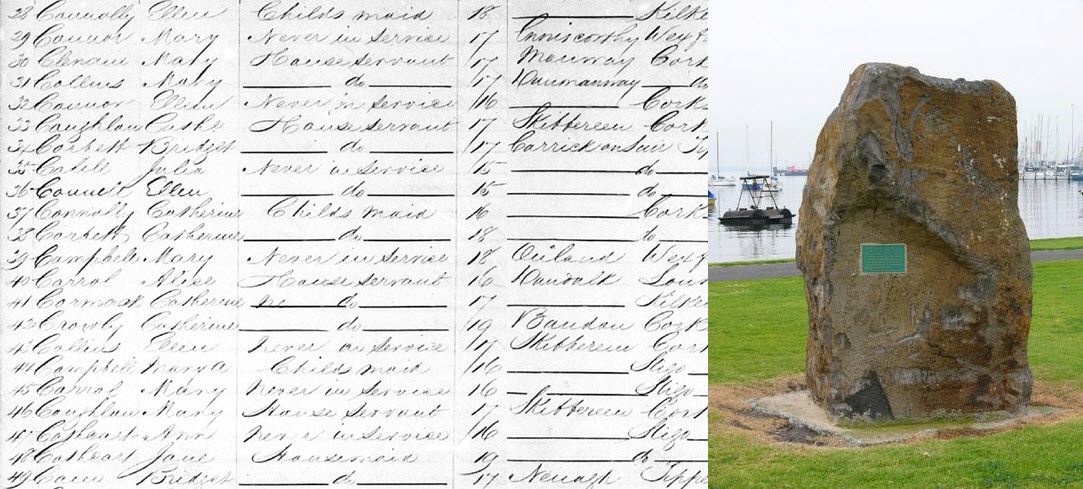It’s more than time to take a 21st century look at how I should conduct my family history research. A review of my family file is well overdue.
Some of the information I hold about my close ancestors really hasn’t been looked at for more than thirty years. In the 21st century there are reams more information now available. And advances in technology make it easier to access and process information.
There wasn’t much movement in the availability of source material when we seriously started our family history research. Now more material is being made available – from the mega databases of Family Search and Trove Newspapers to the indexes of local cemeteries and family history societies.
Nevertheless, there are still gaps in the understanding I have about my family. There are still brick walls impeding my progress. Well, no. The barriers are more like the lava barriers that dam and redirect rivers and creeks. It’s as though the glimpse of a brick wall solution isn’t simply walking over the stoney rises but following the streams the lone way around.
There is no better place to start my 21st review than with William Newman.
William Newman and Ann Cathcart are my Grannie Baulch’s grandparents – making them my great great grandparents.
William Newman still remains as elusive as ever – merely recording on his children’s certificates that he was born about 1832-1833 in London. This may even have been the City of London or it could have been Greater London. William’s birth is recorded as being on 18 Jun 1834 in the Family Bible. This family bible information appears to have been collected before William died so is likely to be correct? Does the slight difference in dates even matter?
Anne Cathcart is our Irish orphan. Most days we accept that she was born in County Sligo, Ireland to Andrew Cathcart and Alicia Sweeney. But there is still that little voice that says she may have been born in Galway and perhaps in Enniskillen, Fermanagh. Does this mean that Andrew Cathcart may have served in the British Army?
It is understood that William Newman arrived in Melbourne not long before he married. However, to date, he has not been found as an assisted passenger to Victoria nor in the unassisted passenger lists (Victorian records started in 1852 for unassisted passengers). There are many other ways and many other guises under which William Newman could have arrived in Victoria. Did he come alone? Did he come with his family? Did he come with his mates – all intent on trying their luck in the goldfields?
Also, it should be possible to find William Newman in the 1841 English census and possibly in the 1851 Census as well. This is about where my search for William Newman has come to a halt.
Ann Cathcart and Jane Cathcart (Ann’s sister?) arrived in March 1850, as Irish orphans aboard the Eliza Caroline. Their religion was listed as Episcopalian. There are three lists for the Irish orphans and a little information can be gleaned from each:
the nominal list of all passengers aboard – including 12 married couples (see PROV microfiche 34 March 1850 Book 5 page 93),
a disposal list for the orphans (see microfiche Apr 1850 Book 4A page 291) and
another disposal list for the orphans available on Ancestry.com (see microfiche 1850 Book 4B page 37).
Ann Cathcart found work for a year with John Brew of Little Collins Street.
Depending upon when he arrived William Newman might not have gone to the gold fields immediately on his arrival in Victoria.
William Newman and Ann Cathcart were married at St Marks on 16 Nov 1852. William lived in the parish of St James and the family was living in Little Collins Street West when their oldest child John William Newman was born. William was working as a painter and glazier.
The family then moved to Creswick (to the Creswick Creek diggings) and then to Ballarat in 1856 where they lived until 1869 – although their son Charles was born at the Back Creek diggings near Maryborough. William did work as a plasterer at least for some of this time.
William did describe himself as a miner on occasion. However, he may have seen that his occupational skills were more useful in finding work to support his growing family. It is easy to forget that a miner’s right brought with it the right to vote.
The family returned to Melbourne and to Church Street in Fitzroy before moving to Bell Street in Coburg where Ann died in 1895 and William in 1915.
William Newman remains an enigma. Mainly because I am daunted by the task of an extensive search through a time when there was a great influx of people arriving in Australia to both the NSW goldfields to start with and the Victorian goldfields. If that isn’t enough, how to find him in London. Especially when it has long been a family story that he changed his name on arriving in Australia. Did William Newman became a new man in Victoria? The task of finding him still daunts me.
Family history research in the 21st century
